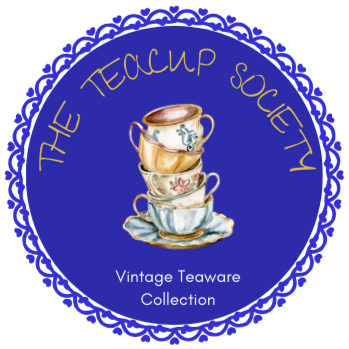Why Staffordshire Became the Heart of English Ceramics
 The distinctively shaped bottle ovens at the Gladstone Pottery Museum. Photo credit: Andrew Stawarz/Flickr
The distinctively shaped bottle ovens at the Gladstone Pottery Museum. Photo credit: Andrew Stawarz/Flickr
When I first began collecting vintage teacups, I recall the mark “Made in England” stirred my curiosity—where exactly in England did these delicate treasures come from? My search led me to Staffordshire, a county steeped in centuries of pottery-making, where the unique city of Stoke-on-Trent shaped the history of fine bone china.
Clay, Coal, and Craftsmanship
Staffordshire sits atop some of England’s finest clay deposits, perfect for crafting fine bone china, porcelain, and earthenware. Add nearby coal and iron for firing kilns and running pottery machinery, and you have the ideal setup for a thriving ceramics industry.
The Potteries: Staffordshire’s Famous Towns
Staffordshire’s pottery industry was centered in Stoke-on-Trent, often called “The Potteries.” This city is made up of six towns, each with its own legacy in ceramics:
- Burslem: Known as the “Mother Town of the Potteries” and birthplace of Josiah Wedgwood.
- Longton: Renowned for elegant fine bone china teaware with delicate gilding and floral motifs.
- Hanley: A bustling commercial hub where potteries showcased their wares for trade and export.
- Stoke: Historic home of the famous Spode works and other major factories.
- Tunstall & Fenton: Smaller towns that added their own craftsmanship to the region’s reputation.
Together, these towns formed a pottery ecosystem that made Staffordshire world-famous.
This delightful keepsake bundle is from Crown Staffordshire and was made in Fenton, Stoke-on-Trent, England.
This lovely 9-piece "Forget-Me-Not” pattern tea set is from Crown Dorset which still produces china in Longton, Stoke-on-Trent, England.
Generations of Expertise
The pottery tradition in Staffordshire goes back to the 17th century, but it was the 18th and 19th centuries that saw Staffordshire truly flourish. Families honed their craft over generations, producing renowned names like Wedgwood, Spode, and Minton. This deep-rooted skillset turned the area into a hub of innovation, elegance, and variety in pottery.
More Than Just Teacups
While Staffordshire is celebrated for its delicate teacups and fine bone china, the region produced much more:
- Tableware: plates, bowls, serving dishes, and tea sets
- Decorative pieces: figurines, vases, and ornamental ceramics
- Specialty and household pottery: earthenware, stoneware, jugs, mugs, and even ceramic tiles
This remarkable versatility is part of what made Staffordshire pottery so highly regarded, both at home and abroad.
A Legacy of Elegance
Over time, this close-knit network of towns created a pottery tradition unlike anywhere else. Today, when you admire a delicate floral teacup, a charming figurine, or a sturdy stoneware jug, there’s a good chance it originated from Staffordshire, where centuries of skill and artistry continue to live on.


